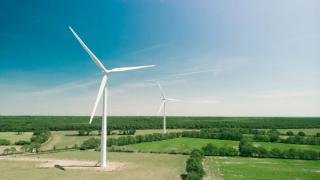
Anything to declare? Environmental Product Declarations explained
- Post Date
- 13 May 2025
- Read Time
- 4 minutes

The environmental sustainability of building materials is becoming an increasingly important business consideration for the construction industry.
This market shift is driven by the heightened awareness of the public and governments who want to know the environmental impacts of the goods and services they buy. Much of the building and construction industry is just scratching the surface when it comes to evaluating the true environmental impacts of their products. Going forward, the environmental footprint of the sand and gravel industry will require in-depth environmental assessments of the products that they sell.
One means of evaluating the environmental footprint of a product is an Environmental Product Declaration (EPD) or following the requirements as set out in ISO14025. An EPD, like the nutrition label on a box of cereal or a chocolate bar, is a standardized measure of environmental parameters for a product. An EPD quantifies environmental information of a product to enable transparent and standardized comparisons between products fulfilling the same function.
For the sand and gravel industry, an EDP would consider the extraction, manufacturing process, energy consumption, greenhouse gas generation, waste generation and other environmental factors. The EPD methodology is based on the Life Cycle Assessment (LCA) principles for environmental assessment to ensure credibility and consistency. As with most standards and public declarations, data is verified by an independent third party to be ISO compliant.
EPDs are primarily intended to facilitate business-to-business transactions. They may also benefit consumers who are environmentally focused when choosing goods or services. Environmentally-conscious consumers, through their purchasing decisions, are fueling a demand for more environmentally-favorable products. These consumers are currently making these decisions voluntarily. However, in the future, they may be required to compare associated embodied carbon or the environmental impact of products through EPDs when making their purchasing decisions.
Though not yet mandatory, many companies are implementing EPDs to improve their sustainability goals, foster credibility, accountability and demonstrate a commitment to the environment to customers. For example, many architects use EPDs to select products when designing a building to meet developers’ sustainability goals and targets. Buildings which require LEED (Leadership in Energy and Environmental Design) are using EPDs as a key information resource to achieve their certification criteria. Consequently, an EPD can also be a great marketing tool for your product.
Every product and sales location has its own unique EPD. For example, the same product may be produced in three different pits, but the environmental footprint for each point of sale will be specific to a site. The development of on-site infrastructure, distance to market, the depth of stripping and the cost to reclaim a pit may be very different in each of those source pits. Consequently, the amount of energy, fuel or transportation associated with producing that product at that pit and energy required to get it to market may be very different in each circumstance. Similarly, different products, even at the same location, can require different inputs of materials and differing energy consumption to manufacture a given product. This means that each product will also require its own EPD.
EPDs are valid for a limited period, as the operating parameters at a facility change over time. Site infrastructure may be reconfigured, and extraction technologies and engine efficiencies will improve over time, and many energy grids are transitioning from a higher to a lower carbon footprint (fuel switching, transition to sustainable lower carbon generated energy sources such as solar or wind power generation), resulting in a lower environmental footprint over time and require updating.
With an increasing demand for sustainability and transparency, proactive producers should contemplate preparing their declarations ahead of time before their clients ask or require them.
Disclaimer: This article was originally published by and is posted with permission from Rock to Road magazine. You can view the original article here.

